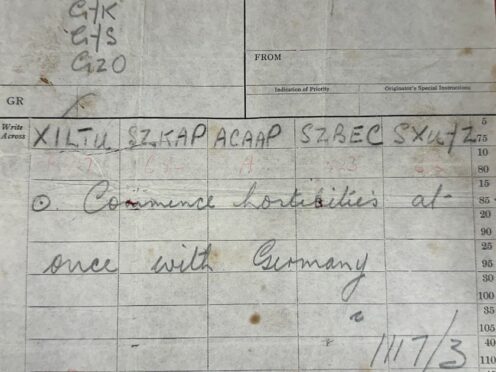Two historic telegrams to the British Home Fleet alerting it that war had been declared on Germany in 1939 are set to go up for auction on Friday.
Two coded messages from the start of the Second World War, including one decrypted in pencil which read to “commence hostilities at once with Germany”, are up for sale.
Both are dated September 3 1939.
The first message is timed 11.20 to 11.23am – five minutes after the news that Britain was at war was announced by Prime Minister Neville Chamberlain.

The message is titled “Most Immediate from Admiralty” and says “special telegram TOTAL Germany,” with a coded message for the Commander in Chief of the Home Fleet.
The second is timed 11.45am and has the decoded message in pencil which says to begin hostilities.
The pair of signals are expected to fetch between £3,000 and £5,000 when they go under the hammer together at auctioneers Henry Aldridge & Son in Devizes, Wiltshire, on Friday.
Speaking to the PA news agency, auctioneer Andrew Aldridge, described the items as “a unique piece of history” and “special”.
He said the telegrams had come via the descendants of William Fincham, a chief officer stationed at HMS President (Whitehall) until December 1939.
“This is the document that was sent to the commander of the Home Fleet, one of the biggest parts of the Royal Navy,” Mr Aldridge said.
“It came from his family, this man retained it, probably thinking this is an important moment in history.
“He didn’t hand it in as he should have done, and it stayed within his family.”
